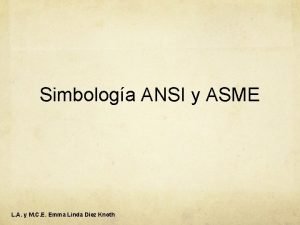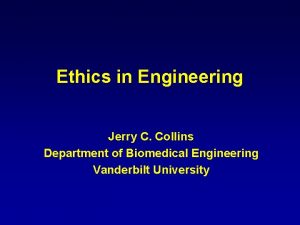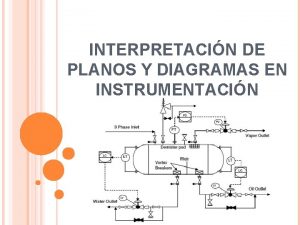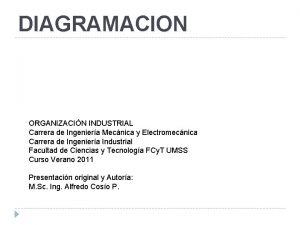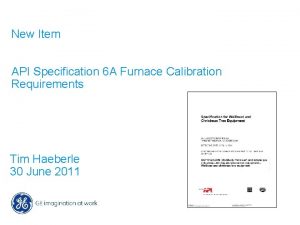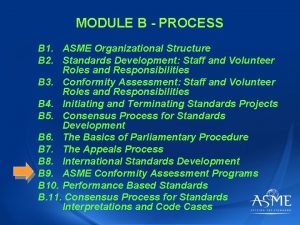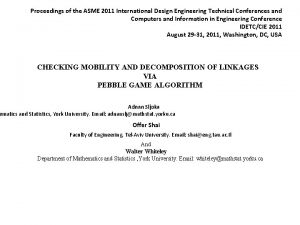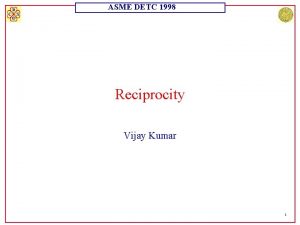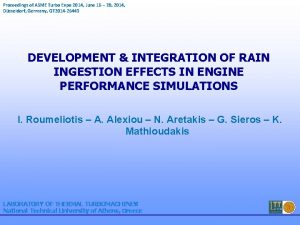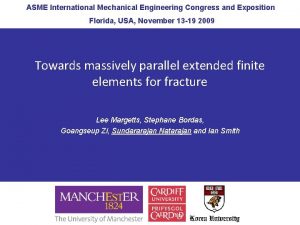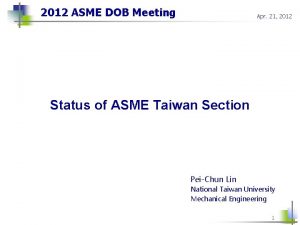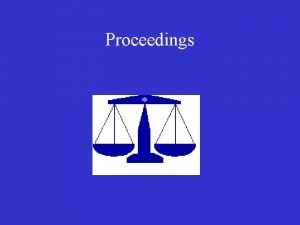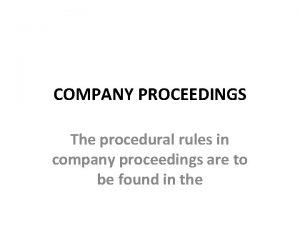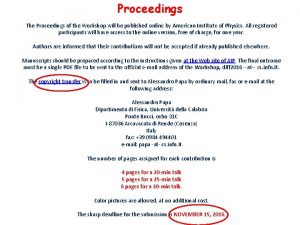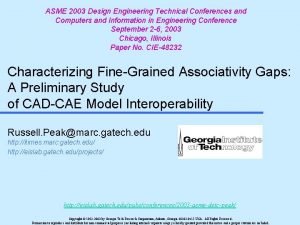Proceedings of the ASME 2012 International Design Engineering


















- Slides: 18

Proceedings of the ASME 2012 International Design Engineering Technical Conferences & Computers and Information in Engineering Conference IDETC/CIE 2012 August 12 -15, 2012, Chicago, IL, USA DETC 2012 -71289 Mobility Determination Of Mechanisms Based On Rigidity Theory Slavutin Michael School of Mechanical Engineering Faculty of Engineering Tel Aviv University Tel Aviv, Israel Offer Shai School of Mechanical Engineering Faculty of Engineering Tel Aviv University Tel Aviv, Israel Andreas Müller Institute of Mechatronics Technical University Chemnitz Germany

Rigidity theory deals mostly with the topological computation. Mechanism theory is mainly concerned with the geometrical analysis and generic statements. In rigidity theory there are two main types of representations: 1. Bar-joint representation. 2. Body-bar representation.

Bar and joint representation Between any two joints (2 d-revolute, 3 d-spherical) there exists at most one bar/constraint. Binary Link/one constraint 2 d – revolute joint 3 d – spherical joint

Body-bar Representation Bodies connected by bars (constraints). 1 Lower kinematic pair Higher kinematic pair 1 2 2 1 2 Hinge Spherical joint 1 2

Representing a mechanism by Bar-joint and Body-bar representations Body-bar: Two bodies and three bars. Bar-joint: Nine bars and seven joints.

Definition of a Body-Bar Assur Graph G is a 2 d/3 d Body-Bar Assur Graph IFF 1. G has 3/6 DOF 2. G does not contain any sub-graph (of more than one element) which also has 3/6 DOF. 3. There at most 2/5 constraints between any two bodies.

2 d Body-bar Assur Graph 1 2 (a) Body-bar Assur Graph 3 (b) Not a body-bar Assur Graph

Analysis mechanisms through body-bar graphs Rigidity theory + Projective Geometry

Analysis mechanisms through body-bar graphs Property 1: The length of the projection of the velocity of any point P, onto a line (not at infinity) with coordinates, denoted by , is equal to the scalar productof Z, with the line coordinate vector:

Body-bar rigidity matrix D 2 E C A 1 B F Each joint of a boy imposes constraints on its motion. 1 yb-y. C x. C-x. By. C - x. Cy. B y. C-y. B x. B-x. Cy. B - x. By. C 2 y. D-y. E x. E-x. Dy. E - x. Ey. D y. E-y. D x. D-x. Ey. D - x. Dy. E Fx 0 0 1 -y. F -1 x. F Fy 0 0 -y. A Ax 0 1 0 0 0 x. A 0 0 0 Ay -1 0 x. Bl y Bl Bl x. Bll y Bll = 0 0 v. A x y

The spatial body-bar rigidity matrix for mechanisms Property 2: For the constraint between the two bodies there will be at most six entries written according to the following equation: From the latter equation it is possible to derive the projection of each point of body A, let it be Ai, on the line of the bar/constraint connected to it, li, as follows:

Example: Body-Bar Rigidity Matrix of Stewart Platform The schematic description of the Stewart Platform.

Pebble game Algorithm 1. Determines the generic mobility of the system and each element. 2. Reveals redundancies. 3. Decomposes the system into Assur Graphs (body-bar or bar-joint).

The main rule/theorem underlying pebble game: The sum of the pebbles on both two end elements before assigning a pebble to a constraint should be at least: dof of a rigid body + 1. 2 d=3+1 Joint Four (2, 2) Body Four (1, 3), (2, 2), (2, 3), (3, 3) 3 d=6+1 Six (3, 3)? Seven (1, 6), (2, 5), (3, 4)……

Assigning pebbled to the elements in dimension d Element can be body or joint. To each element we assign pebbles according to its dof. 2 d 3 d Joint Two Three Body Three Six

Moving pebbles to the constraints from the elements Each constraint reduces one dof thus we move one pebble from the end element to the constraint. Element i Element j Element j The directed constraint is directed from the element from which the pebble was taken.

6 8 5 4 2 3 4 2 5 7 6 8 3 0 1 2 1 1 3 0

7 6 8 5 Mechanical system 4 2 2 1 3 4 2 5 7 6 8 3 0 1 Body-bar Graph 1 3 0
 Ra 9344 cases
Ra 9344 cases Meeting proceedings meaning
Meeting proceedings meaning To stop proceedings temporarily; move to another place
To stop proceedings temporarily; move to another place How to get divorce in india from wife
How to get divorce in india from wife In a typical asme welder qualification test
In a typical asme welder qualification test Simbologia ansi para diagrama de flujo
Simbologia ansi para diagrama de flujo Asme ptc 4
Asme ptc 4 Simbologia asme
Simbologia asme Asme fundamental canons
Asme fundamental canons Characteristics of profession
Characteristics of profession Asme standards
Asme standards Welder qualification thickness range asme ix
Welder qualification thickness range asme ix Asme turbo expo 2014
Asme turbo expo 2014 Rosa fluo
Rosa fluo Diagrama de flujo ansi
Diagrama de flujo ansi Asme section v
Asme section v Asme learning and development
Asme learning and development Asme 2750 furnaces
Asme 2750 furnaces Asme
Asme





